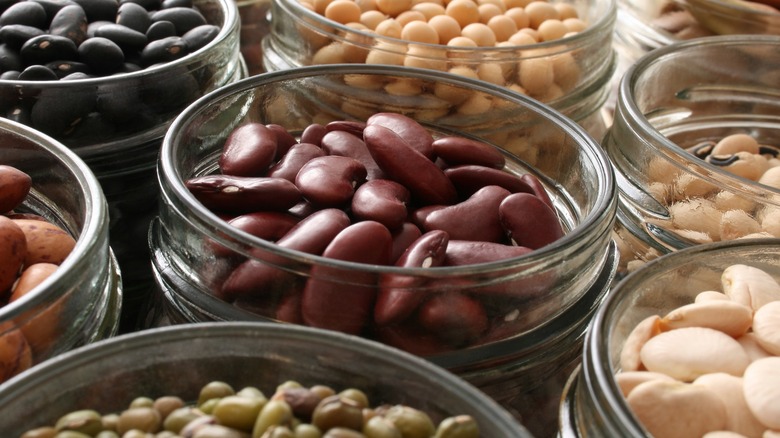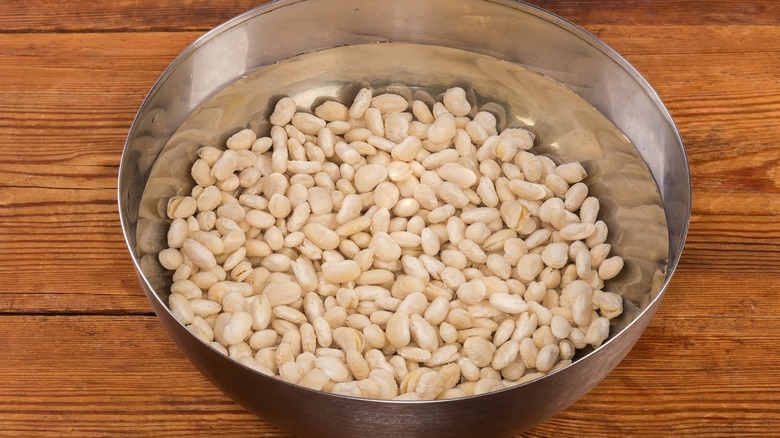How To Tell When Your Beans Are Properly Soaked
Soaking beans is an age-old practice that's essential not only to soften them but also to break down some of the compounds that can cause digestive discomfort. Most beans usually benefit from being soaked between eight to 12 hours. But here lies a challenge — with such a time range, how does one know when their legumes are soaked just right? Because the soaking window isn't an exact science and varies based on bean type, size, and age, we need to understand the signs of a perfectly soaked version.
If they are soaked too briefly, you won't experience the benefit of a reduced cooking time and people with a sensitive stomach might experience discomfort due to the lingering gas-producing compounds in the beans. On the other hand, over-soaking legumes can make them too soft and cause them to break apart during cooking, leading to a mushy texture in your dish. Achieving the right balance ensures that they maintain their structural integrity and provide the desired texture and flavor in the final dish.
The texture, size, and appearance of properly soaked beans
First and foremost, properly soaked beans will have expanded to about twice their original size. This swelling indicates that they have absorbed enough water to begin the cooking process. While the exact expansion can vary depending on the type and age of the legume, a noticeable growth in size is a good initial sign.
Secondly, as beans soak, their skins become smoother. If you find them with wrinkles or ones that appear shriveled, they might need more soaking time. On the contrary, if beans are splitting open, they may have been soaked for too long. Ideally, they should have a firm but smooth appearance without any obvious breaks in the skin. After the visual cues, perform a simple texture test.
Take a bean between your fingers and give it a gentle squeeze. A properly soaked version should yield under slight pressure but shouldn't be mushy or disintegrate entirely. And lastly, a properly soaked legume should separate easily down the middle when you try splitting it, and the skin should be easy to peel but not fall off on its own. In essence, while soaking time is a useful guide, the bean itself provides more accurate feedback.

